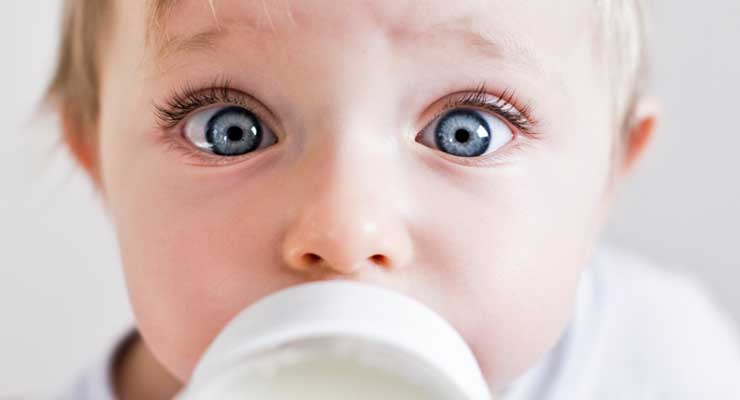The eye color with which your baby is born is not necessarily the eye color your baby will have for long. A newborn’s eye color is likely to change. Give it about 6 to 9 months; the baby eye colors should stick by then. In some cases, eye color can take as long as three years to set. Caucasian babies usually have dark gray-blue eyes at birth; African-American, Asian and Hispanic babies usually have dark gray-brown or hazel eyes that continue to darken.
Baby Eye Colors
It’s true that your baby’s eye color is likely to change, but what probably won’t happen are your newborn’s eyes getting lighter. If eye color is going to change, it darkens because the irises continue to gain more pigment. Blue eyes have the least amount of pigment, even if they appear darker than green or hazel eyes.
Genes
It’s true that you and your baby’s father’s genes determine your child’s eye color, but that doesn’t mean that just because both of you have green eyes, your baby will too. You can carry brown or blue genes, for example, and they can mix in all sorts of ways. The most common genes for eye color are green, brown and blue, but genes also account for gray, hazel and all sorts of combinations in between. Your child’s eye color can be totally different from your or the father’s eye color.
Dominant Eyes
Some eye colors are more dominant than others. For example, if both you and the father have brown eyes, your baby is likely to have brown eyes as well because the darker the color, the more dominant. Brown wins over green, which wins over blue. This is not automatic, though. You can have blue eyes, for example, the father can have brown eyes, and your baby can have blue eyes. Brown doesn’t always win.
Two Different Colors
Although rare, some babies develop two different-colored eyes. A trauma around the time of birth or faulty pigment development is usually the reason. Have your baby’s eyes examined if she has two different-colored eyes. The phenomenon is usually nothing serious, and the only problem she’s likely to have later in life is deciding which color eye shadow to use. But, the color difference may indicate a problem.
Fun Eye Facts
Light, bluish-gray eyes that have the least pigment and dark, brownish-black eyes that have the most pigment are the two ends of the eye-color spectrum, with many variations in between. Shakespeare gave green eyes a negative connotation when he coined the term, “green-eyed monster,” for jealousy. Some people’s brown eyes are so light; they appear to be amber in color. Hazel eyes appear to change color depending on the lighting, sometimes looking more green and other times appearing to be browner.
Choosing
The technology is here for parents to choose their baby’s eye color by doctors screening embryos before implanting them. But, when a Los Angeles fertility clinic opened that allowed this, public outrage was so great, the clinic stopped offering the program. James Hughes, a proponent of letting parents choose their baby’s eye color, told “Wired” magazine that because the technology exists, it’s inevitable that someday people are going to use it.





